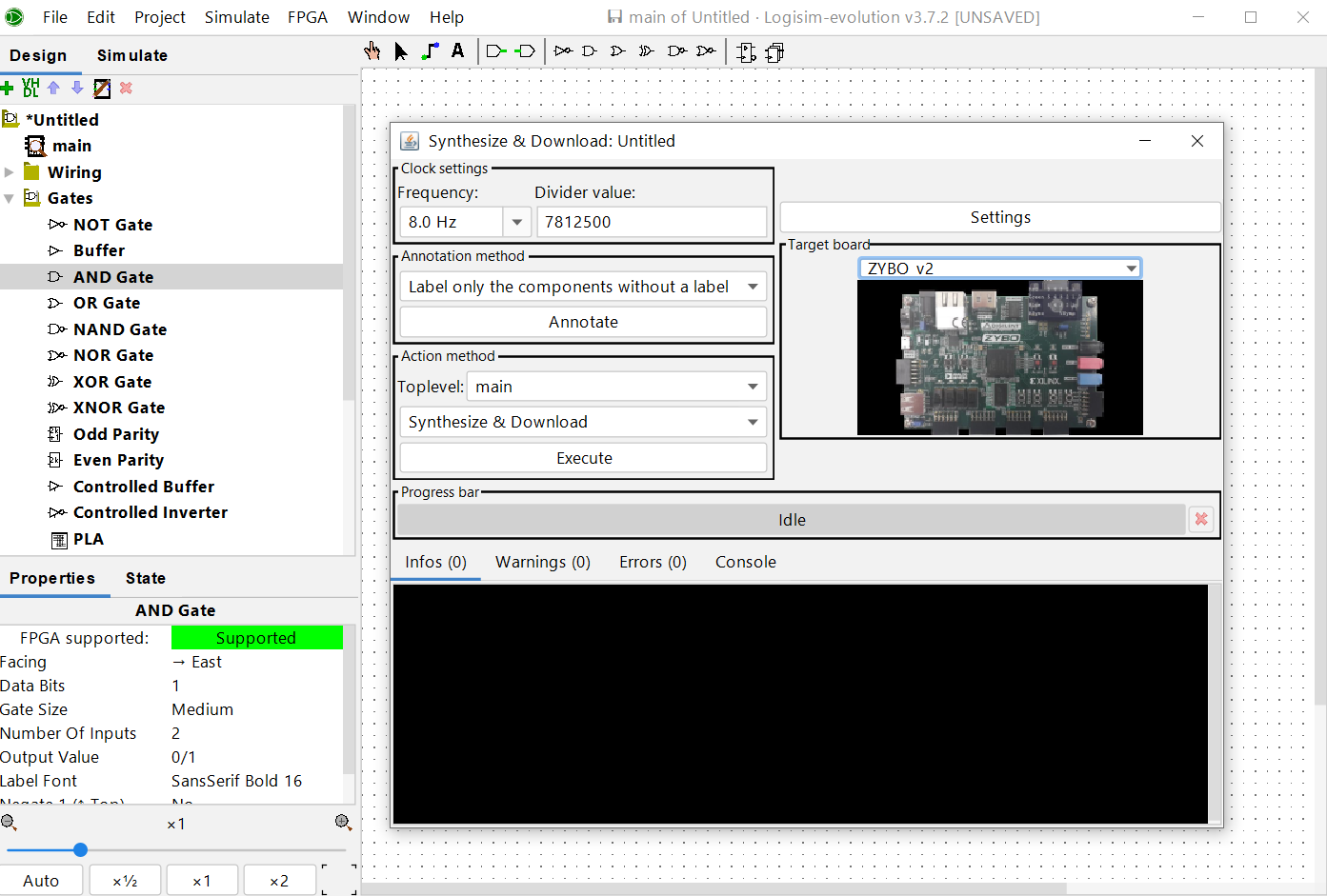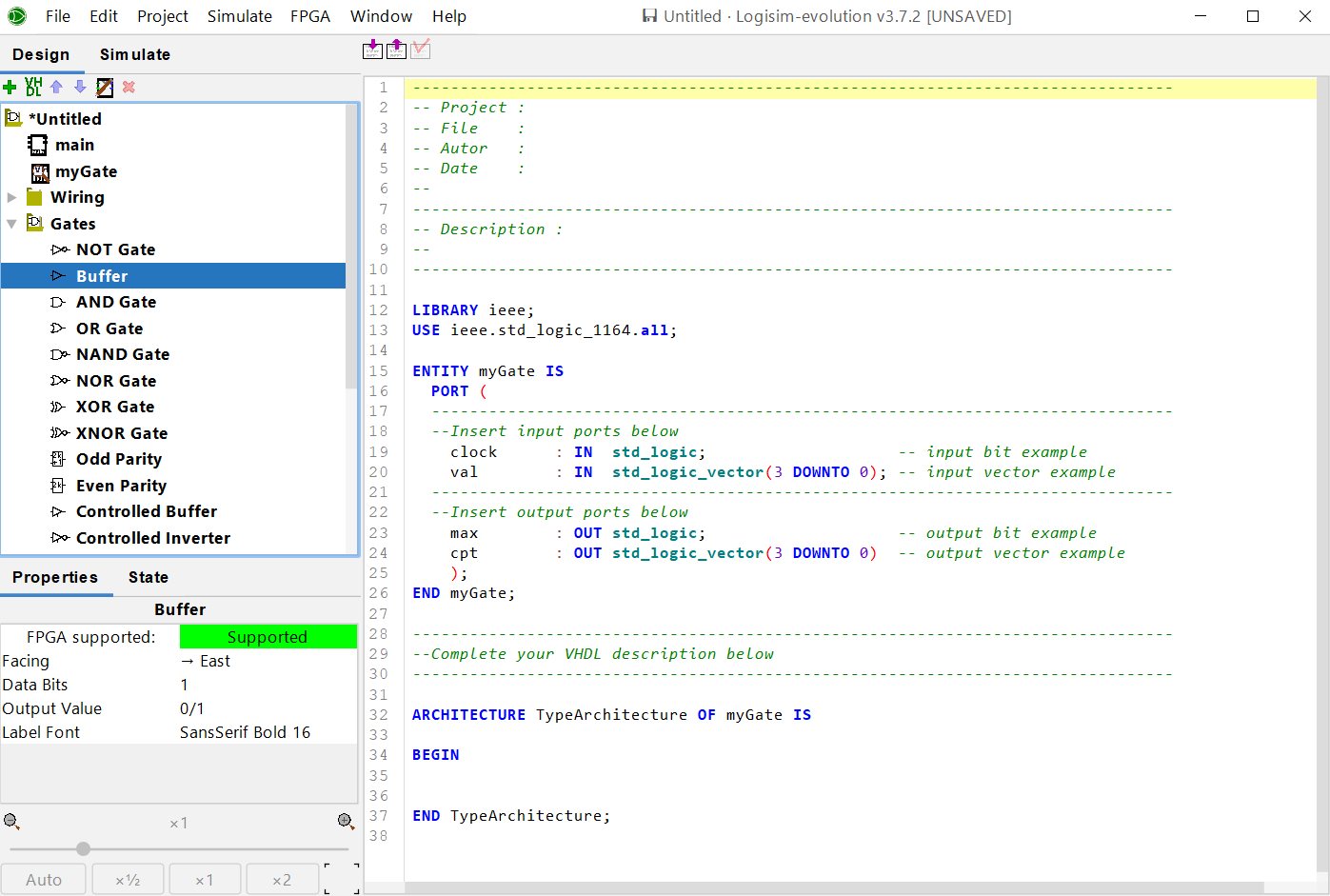Logisim Evolution Intro
Part 1: Introduction
Background
A traditional FPGA IDE (e.g. Vivado (for Xilinx) or Quartus (for Altera)), offers the ability to design, simulate and synthesize hardware ideas. These software tools are very powerful but also very comprehensive and sometimes overwhelming for users that are new to hardware design.
Logisim is an educational tool for designing and simulating digital logic circuits, with a friendly user interface.

Compared with Vivado or Quartus, Logisim does not offer the possibility to synthesize schematics or HDL into hardware. However, it does offer the ability to represent your hardware ideas into a schematic, fast, easy and in a simple way. Logisim is so powerful that can be used (and is used) to design and simulate entire CPUs for educational purposes (Link Example).
The good news is that because Logisim is free, open source and cross-platform, several developers augmented Logisim to incorporate the ability to synthesize schematics and deploy the code into different types of FPGAs.
You can find different flavors online, but this article is going to focus on Logisim Evolution which has been developed by different people and institutions (credits).
Logisim Evolution

Logisim Evolution includes a good portion of addons from the original version.
- Chronogram (to see the evolution of signals in your circuit)

- Electronic board integration (schematics can be simulated on real hardware)

- VHDL components (components behavior can be specified in VHDL!)

And much more...
The remaining articles of this series will focus on explaining how to integrate different Electronic Boards with Logisim Evolution.